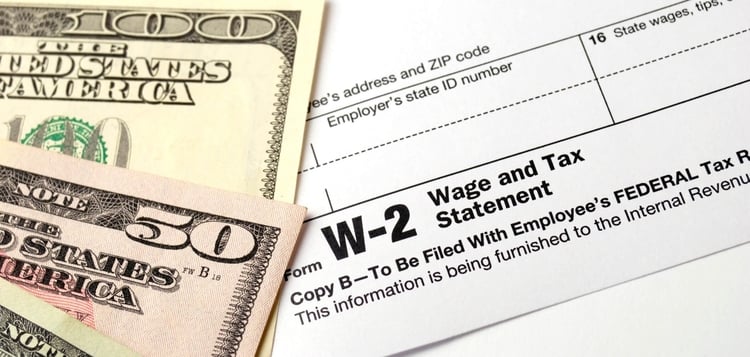Selecting the Right Tax Withholding Options

Is your withholding allowance set to withhold the appropriate taxes, ensuring your paycheck is accurate? This is a hot topic, especially this time of year for the thousands of associates who work for our clients via our employer of record solution. Read more in this nextSource blog to ensure your 2019 withholding is correct.
A withholding allowance is like an exemption from paying a certain amount of income tax. So when you claim an allowance, you’re telling your employer (and the government) that you qualify not to pay a certain amount of tax. The more allowances you claim, the less tax your employer withholds from your paychecks.
It’s common—but preventable—for employees to be incorrectly taxed based on their geography. For example, living in one state and working in another. Taxes should be paid based on where someone works, not resides. This is a very common misconception which leads to employee’s owing money come income tax season. It’s incumbent on the employee to monitor their paychecks to ensure they are paying the appropriate state and local tax. If they are not, they must notify their payroll department immediately. Their payroll department will then help the employee update their tax information and reverse or correct any previous payments made so that YTD taxable wages accurately reflect the location in which the employee worked. Interestingly, incorrect work locations not only impact the taxes paid, but could impact paid time off as well, so it’s critical to be accurate.
While payroll departments legally cannot give tax advice to employees, there are a couple of resources that are recommend to employees to help them determine their correct withholding rate, given their unique situation. Two of the most common are:
When to Check Your Withholding:
- Early in the year
- When the tax law changes
- When you have life changes:
- Lifestyle – Marriage, divorce, birth or adoption of a child, home purchase, retirement, filing chapter 11 bankruptcy
- Wage income – You or your spouse start or stop working or start or stop a second job
- Taxable income not subject to withholding – Interest income, dividends, capital gains, self-employment income, IRA (including certain Roth IRA) distributions
- Adjustments to income – IRA deduction, student loan interest deduction, alimony expense
- Itemized deductions or tax credits – Medical expenses, taxes, interest expense, gifts to charity, dependent care expenses, education credit, child tax credit, earned income credit[2]
Best practices:
- Be proactive and review your paycheck throughout the year. If you notice something that doesn’t seem right, contact your payroll professional right away
- Check your tax withholding against a calculator half way through the year. It’s a good time to make an adjustment to avoid an end of year (unpleasant) surprise.
- If your HRIS/payroll system has a “model my pay” feature, utilize the option as it could be helpful as well.
It’s exactly this sort of white glove approach that nextSource takes contingent workers who are engaged through our employer of record services. An EOR service provider assumes all administrative and legal responsibility for paying wages